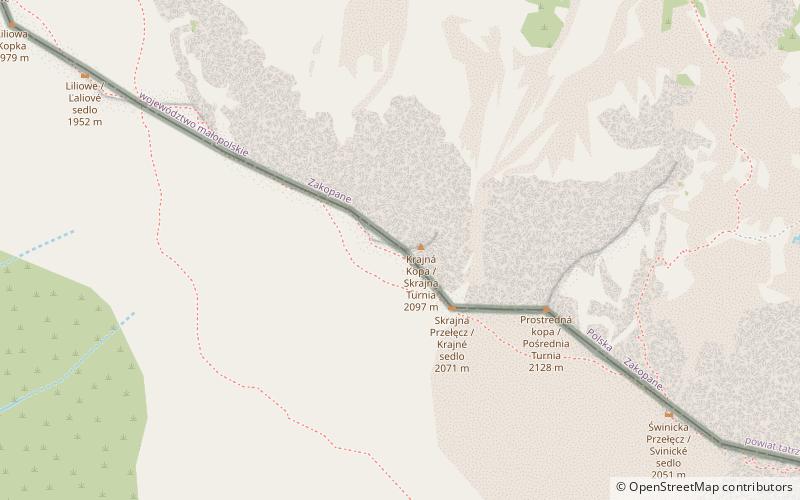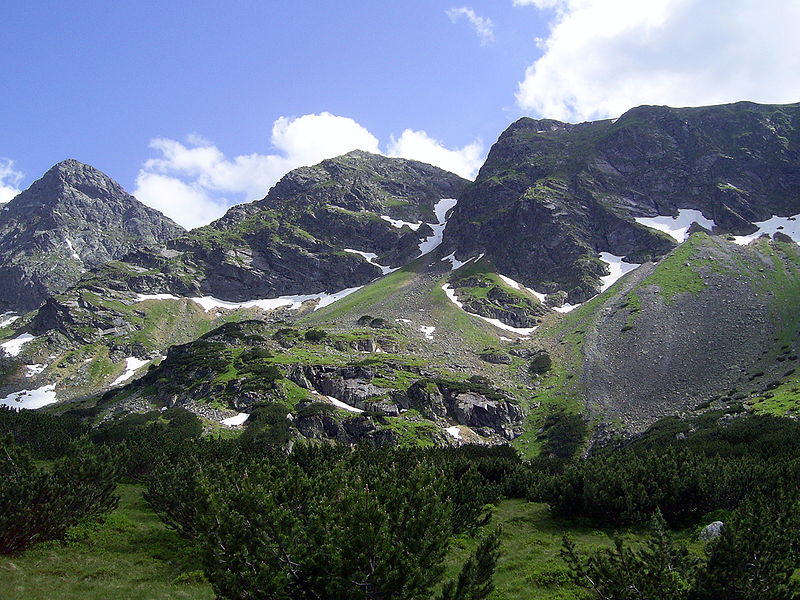Krajná Kopa / Skrajna Turnia


Facts and practical information
Extreme Turnia - the first peak from the west in the ridge of the High Tatras, located between the Liliowe Pass and the extreme pass. The next peak in this back to the east is the indirect Turnia and then Świnica. The Polish-Slovak border runs through these peaks and the passes. The extreme turns are made of granitoids. Ludwik Zejszner wrote about her in 1850: ".. lies in the middle of the Tatra band and is a petrographic border for granite."
On the Polish side, the extreme Turnia falls with walls up to 270 m high. It creates two ridges: a short north-east. To the southeast, it falls by a wall to an extreme gully from the extreme pass, northwest by wall to the Great Piarażysko and Zielona Staw Gąsienicowy, a longer and gradually decreasing north-west. His orographically left slopes create a limitation for Lilac depression, the right fall to the same piarażyska over the green caterpillar pond.
On the Slovak side from the extreme turns fall in the southwestern direction, two grid separating the Valentine Valley from the main sequence of Cicha valley. From the side of the Valentine valley, the heat has a mild slopes, the grassy top, lower with dwarfs. Zaremba's Żleb Zaremba falls down to the Cicha Liptowska valley between the stags, below the gully from Liliowy.
Highlanders have been reaching the top for a long time. Stanisław Staszic was probably on it around 1805, and certainly on July 16, 1867 Eugeniusz Janota with companions. The first recorded in winter: Mychajło Bojczuk and Mariusz Zaruski in 1904.
Of the rare plants, they occur on the extreme turnia Sasanka spring, Alpine Mietlica, Hungarian adjective and Carpathian Ukwap.
Prešovský
Krajná Kopa / Skrajna Turnia – popular in the area (distance from the attraction)
Nearby attractions include: Kriváň, Veľké Hincovo pleso, Kmeťov, Furkotský štít.











